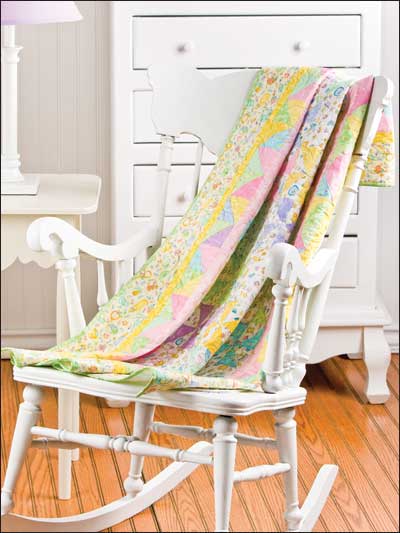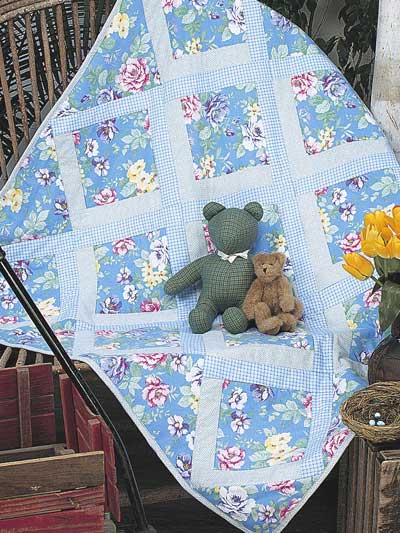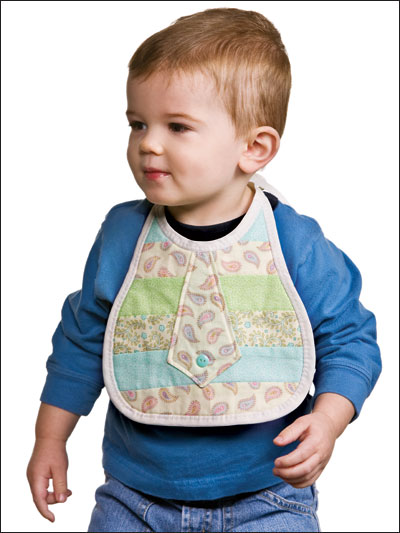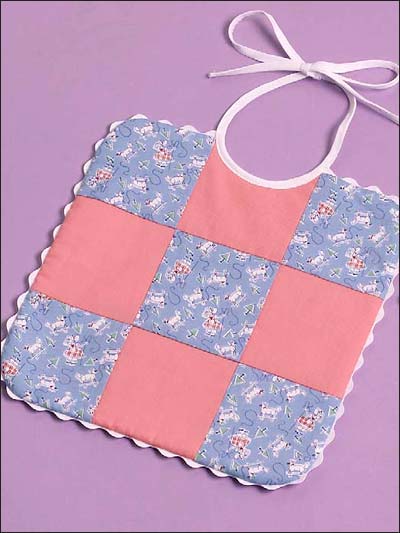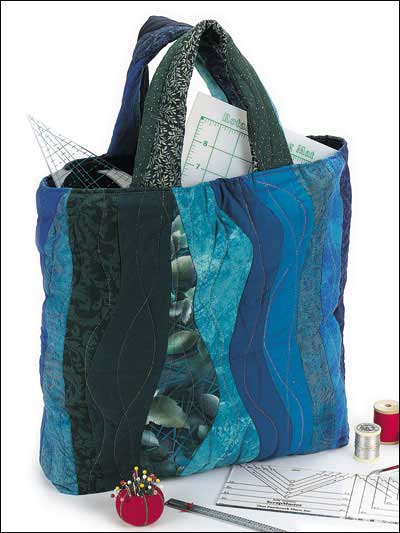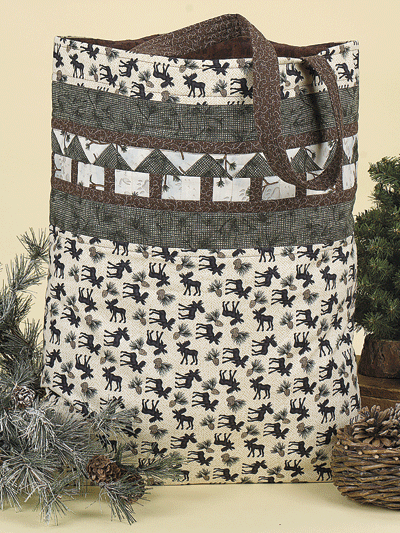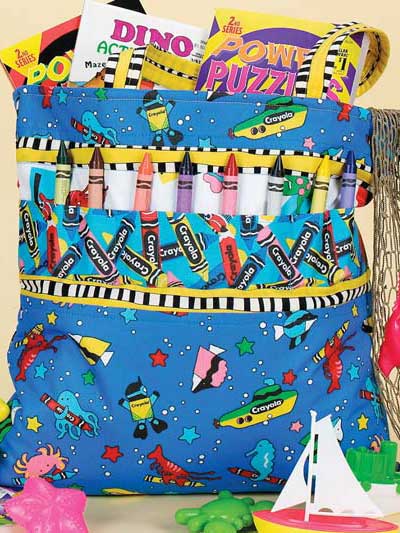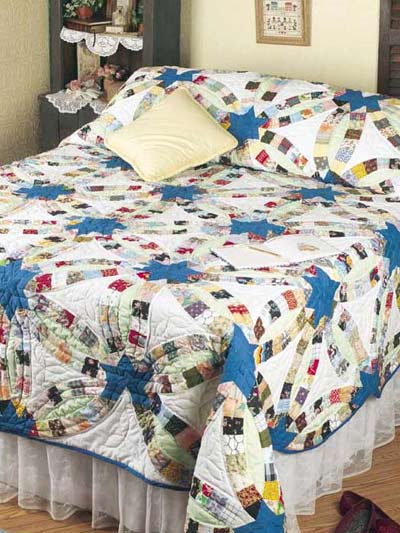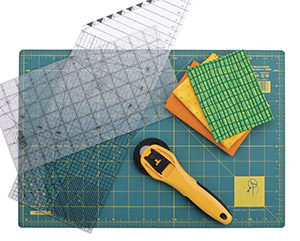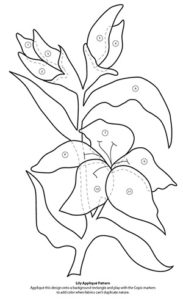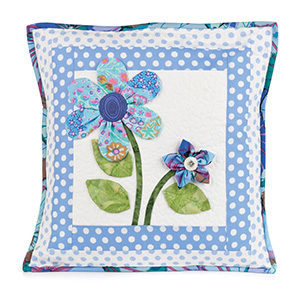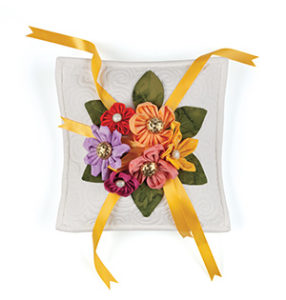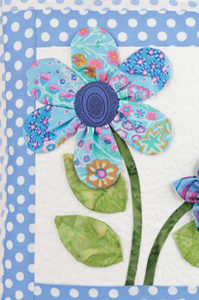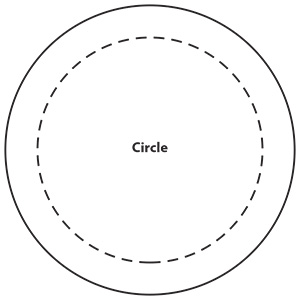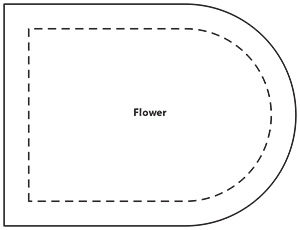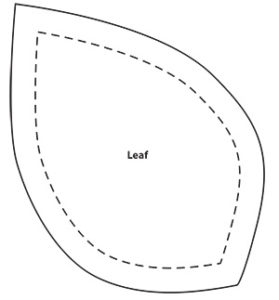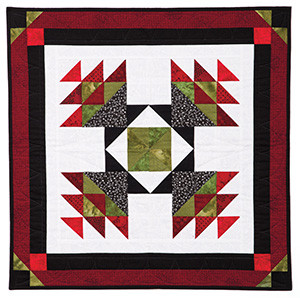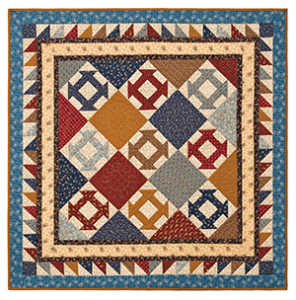Quilted Gift Ideas for Christmas, Babies, Birthdays and Other Occasions
Quilted gifts offer lots of benefits for both the giver and the recipient alike. The recipient can rest assured that the gift was designed specifically with her in mind. And the giver? For one thing, she gets to experience the joy of quilting — pairing fabrics and patterns, seeing the quilt design come together with every piece that’s sewn in place, and bringing it altogether with batting, backing and just the right stitch pattern. The end result is a quilted gift in which the maker takes pride.
Not only does the quilter enjoy the experience of creating a quilted gift, she gets to experience the joy of giving. As one quilting friend once told me, “I just get a good feeling inside when I give someone something I’ve made.” And that friend should know. She’s made dozens of quilted gifts over the years.
What are some things to remember as you search for quilted gift ideas? Hopefully, these tips will help.
Quilted Gift Ideas: General Thoughts
Probably the most important thing to remember is who will receive your quilted gift. What’s her style? What are her needs? What colors does she have in her home?
Secondly, consider the time frame. How long do you have until the quilted gift needs to be given? If you just received an invitation for a baby shower that’s two weeks away, a crib quilt might not be your best quilted gift idea. You might need to look for something smaller. But if a loved one announces she’s pregnant, making a baby quilt is much more doable because you have months until Baby arrives. We’ll talk more about quilted gift ideas for babies later.
And thirdly, when you’re looking for quilted gift ideas, keep in mind your skill level and opt for a quilt pattern that’s easy for you to complete, especially if you’re a perfectionist. For example, one grandma chose to make baby quilts for each of her grandbabies. For each child, she let the mom-to-be choose the pattern and fabric. One pattern challenged her a bit, and the quilt wasn’t “perfect” in a couple of places. It was still a beautiful baby quilt. The mom loved it, but Grandma didn’t feel great about it.
Remember, making a quilted gift should be a joy for you, not something to stress over. Stretch your quilting abilities with projects that are just for you.
Quilted Gifts Ideas for Babies & Kids
I said we’d talk more about quilted gift ideas for babies and kids. When you’re making a quilted gift for a baby, it’s wise to consult the mom for larger projects that are going to be more costly and time consuming. There’s a better chance you’ll both be happy with the end results, and you can spend time together going to the fabric store and choosing the right fabrics.
If you want to make a baby quilt, Celebrate Baby quilt pattern and Lazy Logs Flannel Baby Quilt are two great options.
They’re both beginner-level quilt patterns with simple designs, and depending on the fabrics you choose, they’re suitable for a baby boy or girl. If your loved one is keeping Baby’s gender a secret, you can always choose neutral colors. Again, it might be a good idea to consult Mom.
However, if you use those free baby quilt patterns to make gifts for a charitable organization, be sure to make a phone call or write an email to the organization and ask about their specific needs. You might be surprised. For example, the quilt guild where I live makes baby quilts for our local crisis pregnancy center. We also happen to live in an area with a large Amish population. We were surprised to learn that the pregnancy center needed quilts made of plain fabrics for their Amish clients.
I mentioned earlier to take into consideration how much time before you need to give the quilted gift. If you receive an invitation in the mail today for a baby shower that’s in two weeks, you’re probably not going to have time to make a baby quilt, but you could use your quilting skills and make a smaller quilted baby gift, like the Baby Bibs Twins free quilted baby pattern or Nine-Patch Bibs.
These free quilted baby gift patterns are small, easy to make, and you might even be able to use scraps of fabric you already have on hand. Pair them with a small toy or set of baby spoons, and you’re ready to go.
Quilted Gift Ideas for Christmas
Oh, Christmastime. There’s just an intangible quality about the holidays that draws hearts toward home. Maybe that’s what makes quilted gifts and other handmade items even more attractive at this time of year. Quilted gifts add a cozy, down-home touch to decor. Plus, you can customize your gifts for the recipients’ tastes, giving them a more personal gift than what the Black Friday sale ads offer.
If you’re planning to give quilted gifts for Christmas or another winter holiday, think about the Christmas decor you know the recipient already has and consider choosing fabrics that will match or compliment it. If you don’t know what your recipient already has or you’re unsure of her personal style, it’s okay to get a little sneaky. Is she on Pinterest? Look her up and check out the things she’s pinned. It might give you some direction when choosing your pattern and fabric.
If you’re making quilted gifts for several friends or loved ones, be sure you don’t bite off more than you can chew. Choose smaller gifts you can complete quickly and easily. Quilted candle mats like the Berry Patch I or Four Patch Christmas Star free quilting patterns are great choices.
Quilted Gift Ideas for Birthdays, Hostess Gifts, Weddings and Other Special Occasions
Throughout the year there are ample opportunities to give quilted gifts. It’s not a bad idea to make a few quilted gifts ahead of time that you can give when an opportunity arises suddenly. Quilted purses and bags make great quilted gifts for birthdays, hostess gifts, graduations and teacher gifts. Free-Quilting.com has a basic Quilted Tote Bag Pattern as well as one that’s slightly larger called A Walk in the Woods Quilted Bag Pattern.
And for kids, there’s the Color Your World Gift Bag pattern. Imagine making that bag ahead of a child’s family vacation and filling it with coloring books, stickers, crayons, snacks and anything else that might help entertain a child on a road trip.
When it comes to weddings and bridal showers, online gift registries give you a great way to research the couple’s style and tastes in decor. Look specifically at the colors they choose for towels, sheets and kitchen linens and incorporate fabrics with those colors into your quilted gift.
If a close family member is getting married, consider a larger project that can become a family heirloom. My great-grandmother made wedding ring bed quilts, like the Double Wedding Ring with Stars free quilt pattern, for each of her grandchildren. They’re now in the hands of the next generation, and eventually, they’ll make their way down into my generation.
Hopefully by now, you have inspiration and a starting point to explore your own quilted gift ideas. Remember, think about the recipient’s style and needs, consider your timeframe and make sure you choose a quilted gift pattern that will be a joy for you to complete. Happy quilting!




